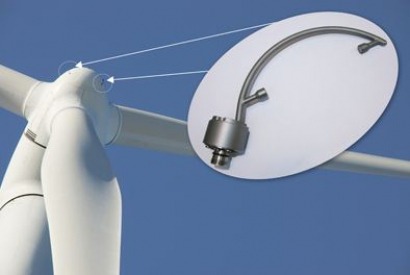
Wind turbine yaw errors lead to power loss and increased turbine loads.
The Spinner Anemometer (SA) that the university has developed is based on industry standard sonic wind measurement technology but it measures the wind on the wind turbine spinner in front of the rotor rather than on the nacelle.
The SA is thus not affected by rotor turbulence, is stable in all weather conditions, and is easy to install and maintain.
Best of all, the technology is comparatively easy on ROMO Wind’s bottom line and is expected to be distributed to on- tenth the cost of the only other precise yaw error detection technology available – the turbine LiDAR.
“From the start we were very impressed by the innovative and thorough work done so far by Professor Pedersen and his group [at DTU] inventing and developing the SA technology,” said Søren Mouritsen, Co-CEO of ROMO Wind AG.
“We are very pleased with this agreement with DTU Wind Energy and the collaboration in general, and we firmly believe that this technology could be an important new addition to the wind power industry – an addition which in a highly cost effective way will provide better outputs and returns to wind farm owners and investors, ” Mouritsen said.
ROMO Wind AG was founded in 2011, and its aim is to help wind farm owners to generally improve their wind farm outputs and return.
Today ROMO Wind uses the SA technology for analysis and correction of basic yaw errors. An easy-to-install SA based kit, which can be retrofitted on existing wind turbines and used directly for controlling the wind turbine yaw, is expected to be launched by ROMO within 12-18 months.
Due to the location of the SA instrument on the wind turbine spinner in front of the turbine rotor, it accurately measures the speed and direction of the wind hitting the rotor.
In contrast, the wind measurement instruments currently being used on wind turbines are all located on the nacelle roof behind the wind turbine rotor. On this location the instruments stand in severe turbulence from the rotor, and in contrast to the SA, their readings are known to be inaccurate.
The inaccurate readings from the nacelle instruments are nevertheless today used for controlling the wind turbine trying to position it appropriately towards the wind – the so-called yaw. If the yaw is only a few degrees wrong, it leads to significant power production losses from the wind turbine.
As part of this agreement ROMO will finance the further development of the technology as DTU Wind Energy continues its world-class research in power curve measurement, yaw control and related areas.
For additional information:

